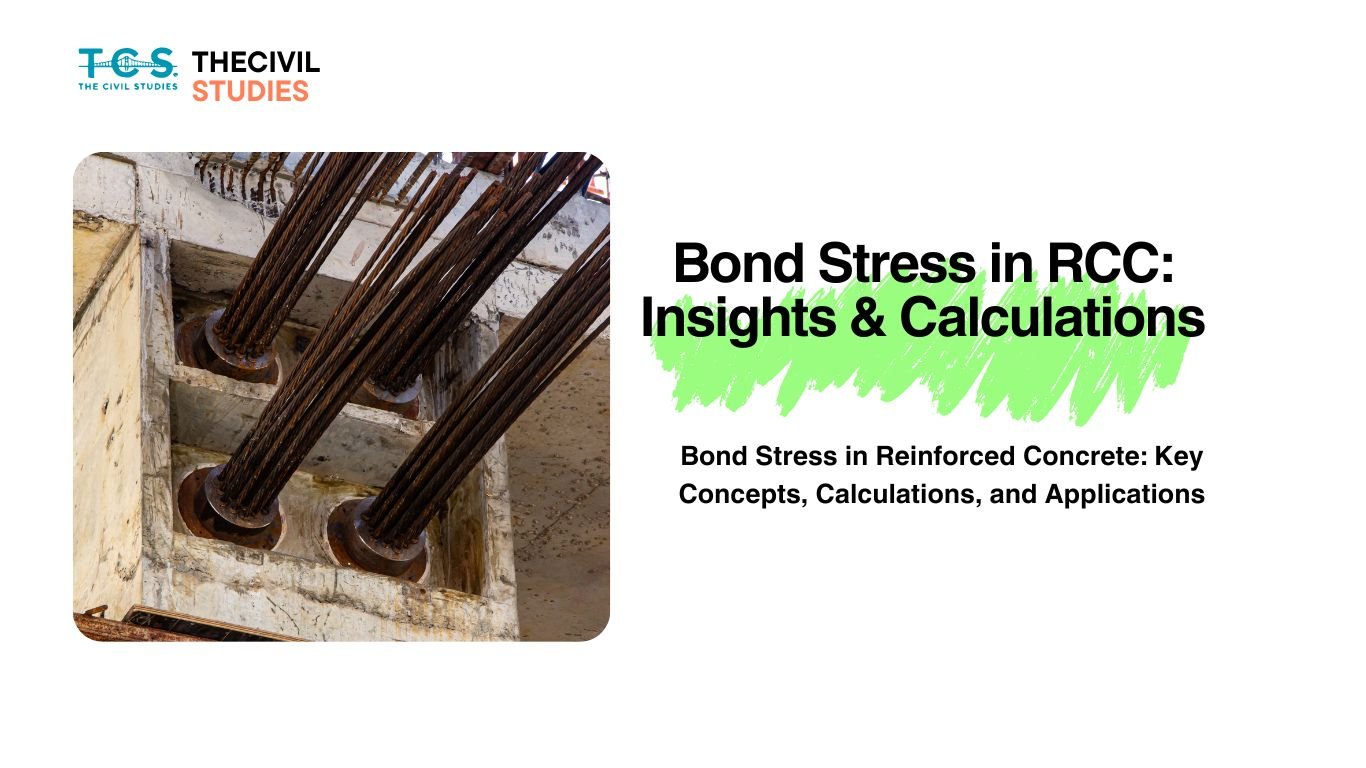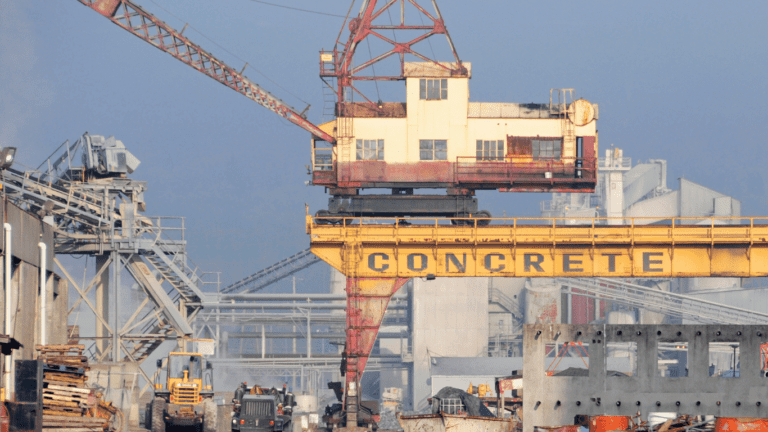In reinforced concrete structures, bond stress is the force that holds the steel reinforcement and concrete together. This bond ensures that both materials—concrete (strong in compression) and steel (strong in tension)—work as a single unit.
When a structure carries a load, the concrete and steel share the responsibility. The bond between them transfers stress from one to the other. If this bond breaks or weakens, the steel bars can slip inside the concrete. This may lead to cracks, loss of strength, or even total failure of the structure.
So, ensuring good bond stress is not just technical—it’s essential for safety and strength in any reinforced concrete design.

Why Bond Stress is Important in Structures
Bond stress plays a big role in structural performance. Here’s why it matters:
- Prevents Slippage: Keeps steel bars firmly fixed in concrete, avoiding unwanted movement.
- Transfers Loads: Ensures stress is passed smoothly between concrete and steel.
- Maintains Integrity: Helps both materials act together, improving the structure’s response under loads.
- Boosts Strength: A strong bond maximizes how much load the reinforcement can carry.
- Improves Durability: Poor bonding can lead to corrosion or long-term damage. A good bond increases the structure’s lifespan.
Types of Bond Between Concrete and Steel
Bond stress doesn’t come from one single action. It includes different types of bonding forces:
- Adhesion Bond: This is the chemical bonding between concrete and the steel surface.
- Frictional Bond: Comes from the roughness of the bar and the grip of the concrete.
- Mechanical Bond: Created by the ribs or deformations on the bars that “lock” the steel into the concrete.
Together, these help hold the steel bars in place and resist any movement when loads are applied.
How to Calculate Bond Stress
To check if bond stress is within safe limits, engineers use this formula:
\tau_{bd} = \frac{\text{Force in Bar}}{\pi \times \text{Diameter of Bar} \times \text{Embedment Length}}
\text{Where:} \\
\text{Force in Bar} = \text{Load applied to the reinforcement (N)} \\
\text{Diameter of Bar} = \text{Diameter of the steel bar (mm)} \\
\text{Embedment Length} = \text{Length of bar inside the concrete (mm)}
Example Calculation
Let’s say:
- Diameter of bar = 16 mm
- Load on the bar = 40,000 N
- Embedment length = 600 mm
Now plug into the formula:
\tau_{bd} = \frac{40,000}{\pi \times 16 \times 600} = 1.33 \, \text{N/mm}^2
ccording to IS 456:2000, for M20 concrete and deformed bars, the permissible bond stress is 1.2 N/mm².
Since 1.33 N/mm² > 1.2 N/mm², it’s higher than allowed. That means the design needs to change. Options include:
- Increasing embedment length
- Using a higher-grade concrete
- Selecting bars with better bonding (e.g., more deformation)
What Affects Bond Stress?
Several things can influence bond strength:
- Concrete Strength: Stronger concrete means better grip on the bars.
- Bar Type: Deformed bars with ribs have better bond than plain smooth bars.
- Surface Cleanliness: Rust, oil, or dirt on bars can reduce bonding.
- Concrete Mix and Curing: Proper mix and good curing lead to a stronger bond.
- Embedment Length and Bar Size: Longer embedment and correct bar sizing help transfer loads effectively.
Ways to Improve Bond Performance
If bond stress is weak or not within limits, here’s what engineers can do:
- Add Hooks or Bends: These provide better anchorage and resist bar movement.
- Use Mechanical Couplers or Welding: Especially useful in splices or critical joints.
- Go for Higher-Strength Concrete: Boosts adhesion between bar and concrete.
- Ensure Proper Compaction: No air gaps means better concrete around the bar.
- Clean Bars Before Use: Remove dust, rust, and oil to ensure strong bonding.
Where Bond Stress Matters Most in RCC Structures
Bond stress is especially important in some structural zones:
- Beam Ends: Where bars often bend and stresses are high.
- Lap Splice Areas: Where two bars overlap and need to work as one.
- Development Length Zones: The length of bar embedded in concrete must be enough to transfer the load.
- Footings and Cantilever Ends: Bends or hooks in these areas face high bond demands.
- Column-Slab Connections: Critical for maintaining integrity at joints.
Final Thoughts: Building Safer Structures with Strong Bonds
In reinforced concrete design, bond stress is more than just a calculation—it’s the hidden force that keeps concrete and steel working as one. A strong bond means a safer, more durable, and better-performing structure.
Discover more from
Subscribe to get the latest posts sent to your email.




